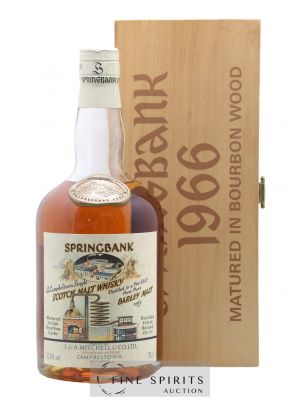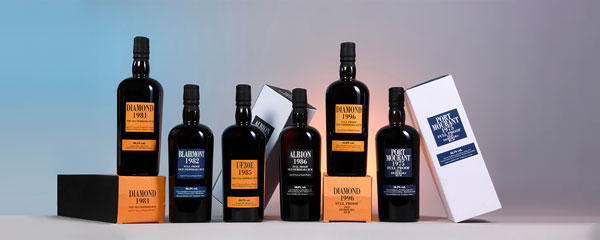Cuvée presentation
A Springbank Local Barley single cask (#489) distilled in 1966, aged in a bourbon cask and bottled in 1997. The first bottling - from a time when it was not yet known as Local Barley - dates back to 1988. This is a Springbank 1967, in a tall bottle. There is a proud headline proclaiming, “A West Highland Scotch Single Malt”, on the label, which is also adorned with charming illustrations representing the distillery, the surrounding fields, the still, its coil condenser and spirit receiver. Following its lead are four single casks of Springbank 1970 bottled in 1991 and 1993, reduced to 46% ABV as the 1987 vintage. During the same time, in 1990, three sherry casks from 1966 were bottled at cask strength in dumpy bottles, as is still done today. The second period of the series, richer and more prolonged, was composed of the famous 1966 casks released between 1996 and 2000 (#470 to #511). This time, the label holds the title: “A Campbeltown Scotch Malt Whisky”, boasting its region of origin. The 1966 vintage is followed by five casks (#6 to #10) from the previous vintage: the 1965. Released in 2001, they were bottled under the label that is still in use today, on which the distillery is shown from the perspective of the surrounding barley fields. This also cements in history the moment when the name Local Barley was bestowed. The latest bottlings seem to mark the end of Local Barley, probably due to a lack of casks to bottle. The series relaunched in 2011 with younger whiskies, often aged around 10 years. Initially conceived as a limited series of five versions, these new bottlings quickly found their place in the hearts of the public. A new one is now released every year.
The distillery Springbank
Scotland, Campbeltown. Distillery operational. Owner: J&A Mitchell & Co Ltd
It is no coincidence that four of the fifteen most prized distilleries in Scotland are family-owned or independent. Throughout the 20th century, this status led them to seize on any commercial opportunity open to them and to develop the marketing ingenuity key to the development and sustainability of their businesses. The Springbank distillery is one of the finest examples of the villainy of the Scotch whisky industry in the 20th century.This is seen in two exceptional bottlings, one distributed in the early 70s, a 50 year old distilled on 29 December 1919 (stated on its certificate), and the other released in the early 90s, a re-bottling from the distiller, limited to 24 editions worldwide, also displaying the vintage 1919. It is also seen in a move made at the very start of the 2000s, when, under pressure from a stock hit hard by years of production crisis (1980s), the Mitchell family decided to drastically change the profile of their single malt, taking the opportunity to change the bottle at the same time.
Report a problem with this lot ? Report






